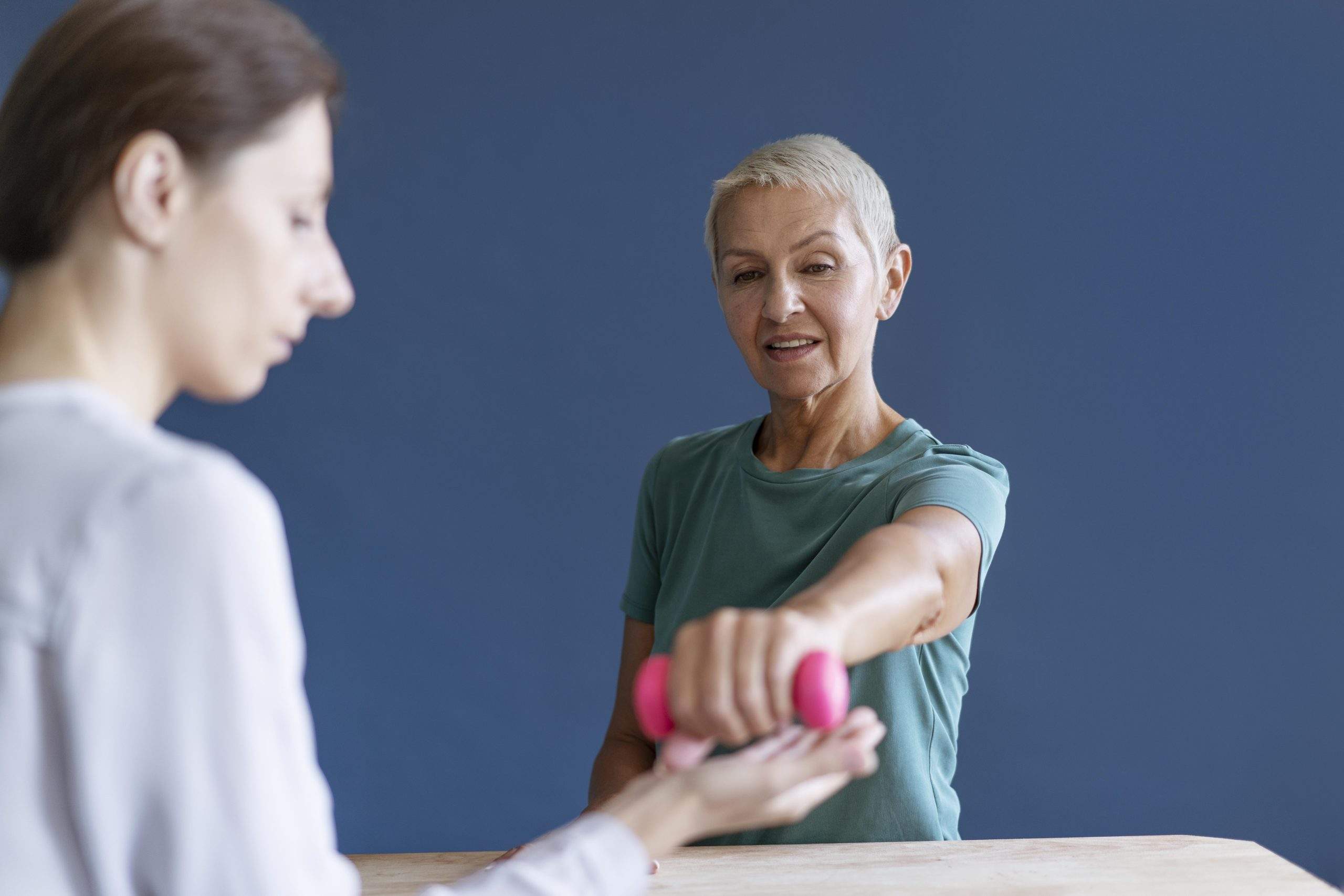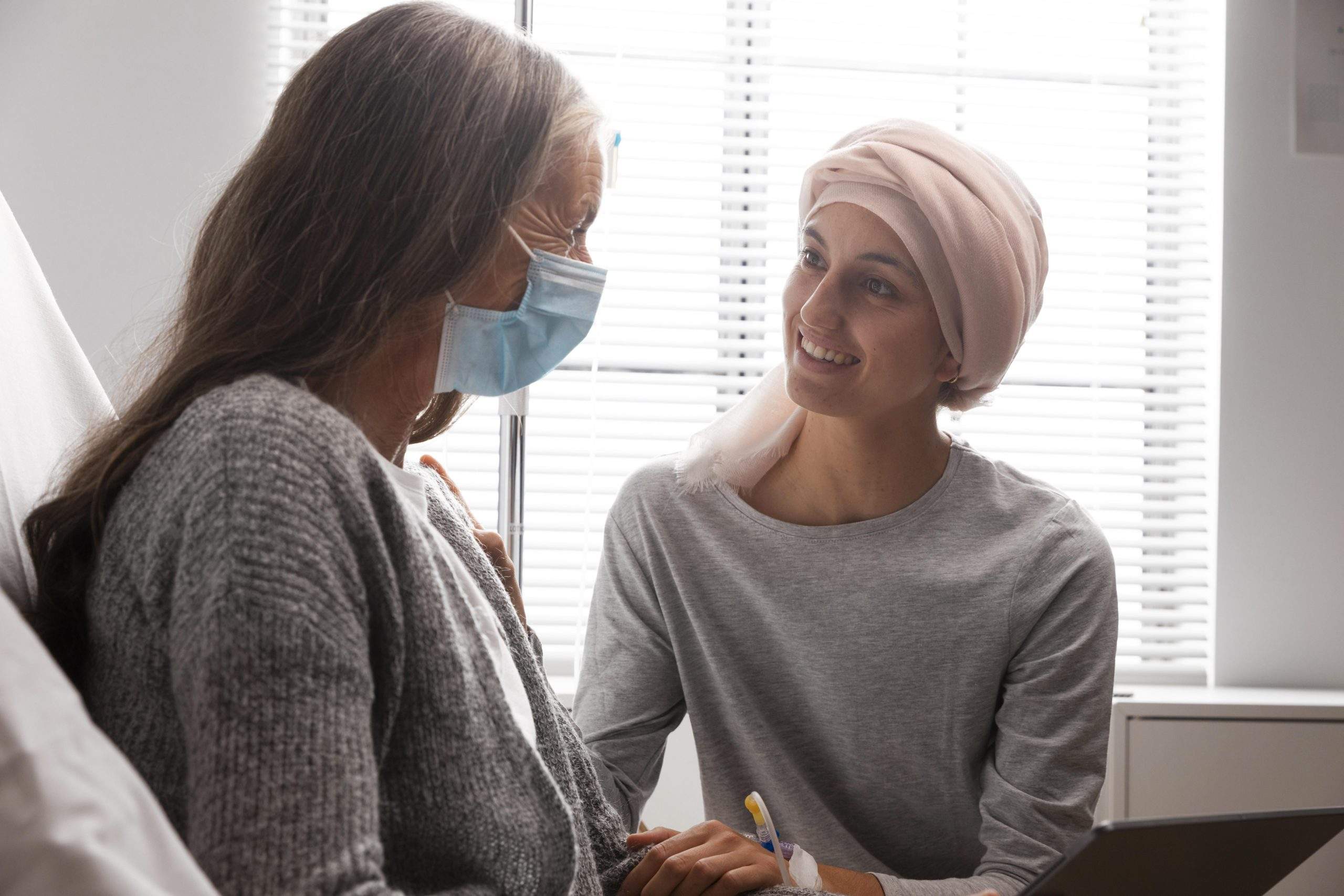Breast cancer is the most common type of cancer seen in women i.e. worldwide 1 in 8 women are diagnosed with breast cancer. Physical Therapy plays an important role in reducing the risk of complications related to breast cancer treatment. The main complications are incision site pain, posterior cervical and shoulder girdle pain, restrictive scarring of underlying tissue of the chest wall, decreased shoulder mobility, postural mal-alignment, fatigue, decreased endurance, psychological manifestations, and lymphedema.
WHAT SHOULD BE DONE TO REDUCE THESE COMPLICATIONS?
Patients should be educated regarding self-management activities. We teach them deep breathing exercises emphasizing maximal inspiration. To improve exercise tolerance and reduce fatigue a home programme of aerobic exercises is advised to the patient which includes walking, slow jogging, and cycling. To improve functional use of the involved upper extremity, the affected hand should be normally used while bathing, dressing, combing hair, eating, etc. Patients are taught how to do an active and self-assisted range of motion exercises of the shoulder, elbow, and hand of the involved upper limb on the first- postoperative day itself. These exercises can be initiated even when the drainage tubes and the sutures are still in place and even during and/or after radiation. After the incision is healed self-stretching of the involved shoulder joint is initiated.
One of the well-known complications of breast cancer treatment is SECONDARY LYMPHEDEMA. Lymphedema is the buildup of lymph fluid in the interstitial spaces (just under the skin) which causes swelling of the arm on the side of treatment. Lymphedema usually occurs about 6 to 8 weeks after surgery or radiation (temporary lymphedema) or months or years after cancer treatment (chronic lymphedema).15 to 20% or 1 in 4 post-breast cancer-treated patients develop upper limb lymphedema. The onset of lymphedema in survivors usually occurs up to 3 years following surgery and/or radiation but in some cases, latent symptoms may be present after 3 years. Lymphedema is graded as mild, moderate, and severe.
Clinical Standard Protocol for Lymphedema Treatment
Complete Decongestive Therapy is multimodal and multiphase.
Phase 1: Intensive treatment |
Phase 2: Maintenance/Self-care |
| · Manual lymph drainage
· Compression with non-elastic bandage
· Therapeutic exercises & elevation of limb above the heart level when possible · Skin and nail care · Intermittent Compression device for moderate-severe lymphedema.
|
· Self manual lymph drainage
· Compression with non-elastic garment during day-time and non-elastic bandage during night time · Therapeutic exercises & elevation of limb above the heart level when possible · Skin and nail care |
At our hospital we provide utmost care to the patients undergoing treatment by educating them regarding these complications which may arise during and/ or after treatment and by providing instructions regarding the self-care needed to be taken by them after discharge from the hospital. Patients are also advised to attend their regular follow-ups to detect any early signs of recurrence so that the treatment can be initiated at an early stage. Patients are instructed about the required rehabilitative exercises on the first postoperative day itself to avoid and reduce the risk of complications such as lymphedema. In addition to early preventive measures we also provide advanced treatments which include intermittent pneumatic compression unit which is widely used to reduce any stage or grade of lymphedema.
Over the years, the incidence of these complications (in the patients treated at our hospital) has reduced significantly due to better surgical techniques (avoiding lymphadenectomy in level 3 of axilla), radiation techniques (precise RT planning avoiding RT to axilla), initiation of early rehabilitation as per protocol and advanced treatment modalities like compression garments and pneumatic compression devices, pain relief medications and procedures.













